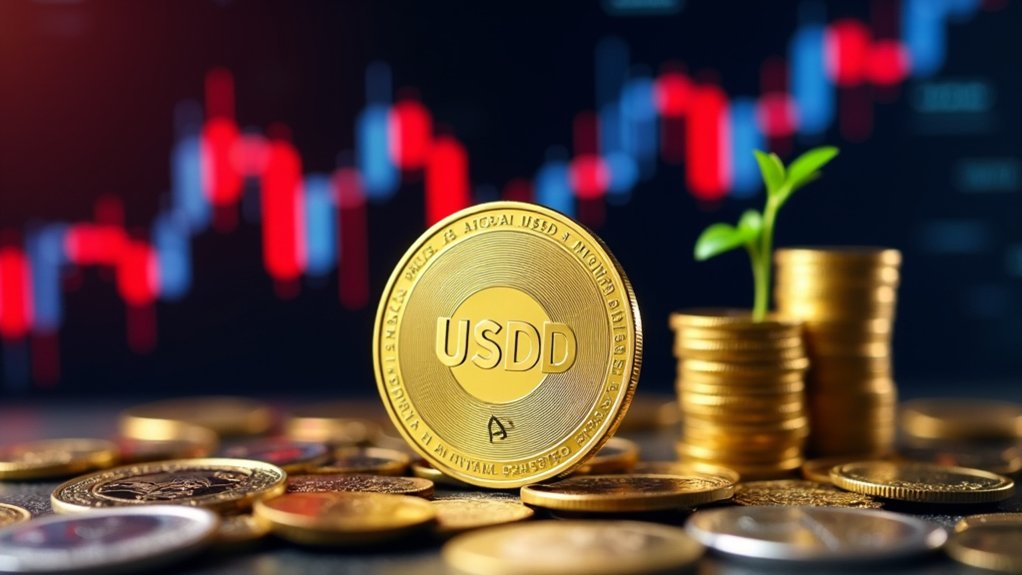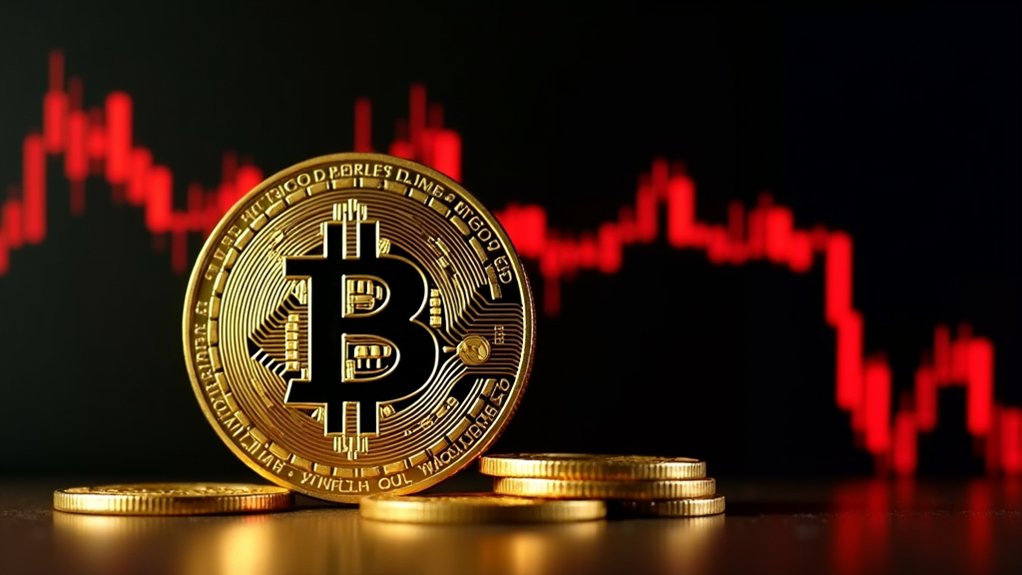USDD isn’t exactly the new kid on the block. Launched in May 2022, it initially tempted crypto holders with a juicy 30% APY. Now with a market cap of $746 million, it’s making another bold move. The timing? Just as Trump takes office and investors anticipate a market uptick. Coincidence? Yeah, right.
The offer is fully subsidized by TRON DAO, with interest sent in advance to a transparent address. Pretty slick PR move. Even slicker is the fact that $10 million in liquidity shifted from USDT to USDD within 24 hours of the announcement. People aren’t stupid when it comes to their money.
USDD maintains stability through over-collateralization—175% to be exact. The collateral pool includes TRX, BTC, and USDT. Its Peg Stability Module allows 1:1 swaps with other stablecoins without slippage. The stablecoin was created by Justin Sun, founder of the TRON Network. USDD has achieved a significant milestone by becoming legal tender in the Commonwealth of Dominica in 2022. Unlike traditional banks, it leverages blockchain technology to secure users’ funds against potential threats. Sounds solid. At least on paper.
Over-collateralized at 175%. Backed by TRX, BTC, and USDT. Perfect on-paper stability with seamless stablecoin swaps. Too good to be true?
But we’ve heard this song before. Remember Anchor Protocol? High yields that ended in tears. USDD’s offering is reminiscent of early 2024 when Ethena’s USDe flashed a 20% APY. That’s down to 11% now. DAI offers 12% on Spark protocol. USDC? A measly 4.1% for Coinbase Wallet deposits.
The risks are real. Regulatory scrutiny. Sustainability questions. Potential market instability if the whole thing goes sideways.
Still, traders are biting. TRX/USDT trading volume jumped 15% to $30 million. TRX/USDD volume spiked 20% to $25 million. For those looking to hedge against market volatility or engage in DeFi activities, USDD’s appeal is undeniable.
Twenty percent in uncertain times. Someone’s gonna make money here. The question is: who?





